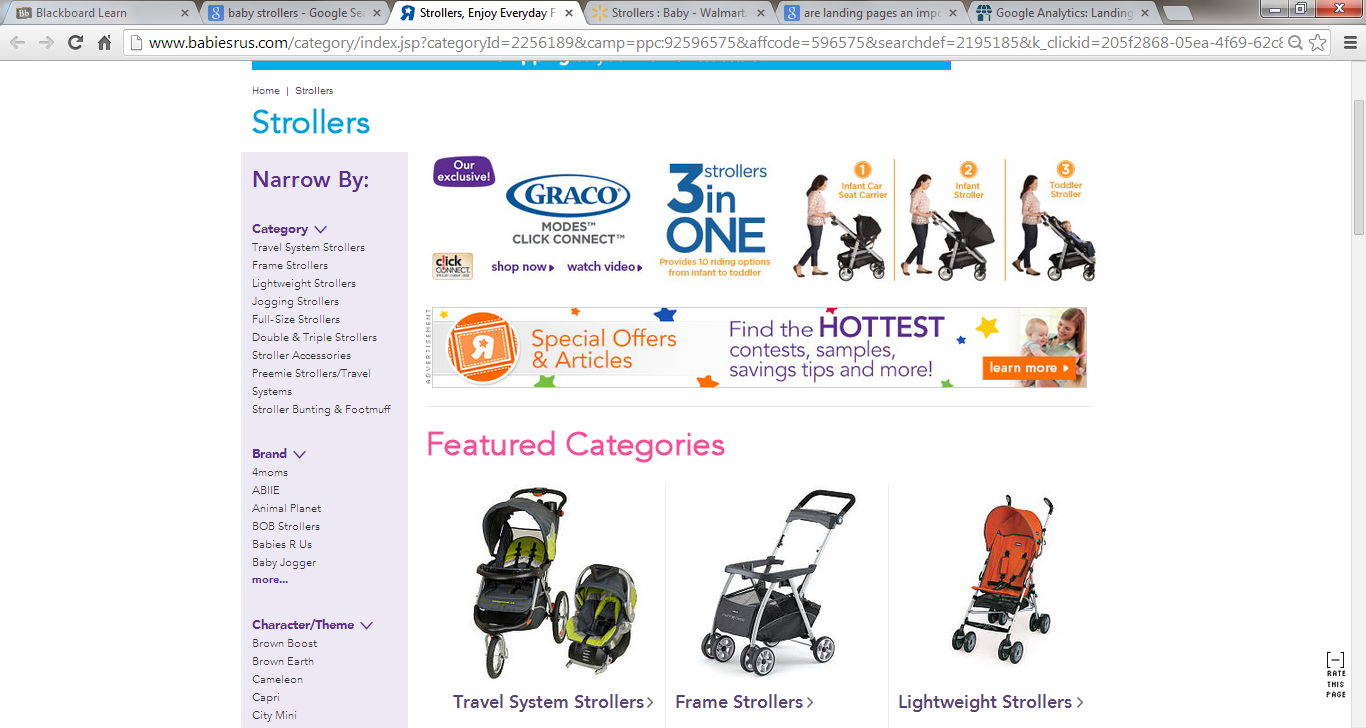What is a landing page? To put it simply, it is the
entrance into a website (Webster, 2013). The landing page is basically where
someone “lands” when they click a link and enter a website. Landing pages are
part of both paid and organic search. When you create ads for a paid search
campaign, you determine the landing page. When someone clicks on a link that
popped up as a result of an organic search, the search engine chooses the landing
page based on its relevance to the search query. Optimization is very important
here. If every single page of your site is not optimized, there is less of a
chance that a search engine will find it when a consumer conducts a search.
“You can coach search engines with proper optimization techniques, but even for
the savviest of SEO practitioners there are no guarantees. In the end, you need
to make sure every single page on your website is performing to a high level,
as any single one of them can be a landing page” (Webster, 2013). In other
words, it is vital to make sure every page on your site and every link to your
site works properly.
Below are some examples. When the query “baby stroller”
is typed into Google, the second sponsored ad is for Babies R’ Us. When I click
on the link, it takes me directly to the website’s page for strollers.
I get the same result when I click on the Babies R’ Us
link in the organic search results. When I click on the Walmart link in the
Google search results, I’m also taken directly to the baby stroller page.
This is good for Babies R’ Us and Walmart. It would be
frustrating for me as a consumer to type “baby stroller” into Google, click on
a result, and be taken to a landing page that has absolutely nothing to do with
strollers! Then I would have to continue navigating through the website I
landed on to locate their page on strollers. This is time consuming, and does
not make a good first impression.
Now that we have discussed what landing pages are and why
they are important, let’s talk about why they are an important metric to
monitor. Landing pages are a visit characterization metric (WVU, 2014). They
tell you a little about your customers. By monitoring the pages on which
consumers enter your website, you can determine the products and pages that
your consumers are most interested in. This will help you target your consumers
more effectively. You might think that your customers really like your business
for one thing, and then find out that your most popular product is something
else entirely!
Furthermore, monitoring landing pages will help you
determine the top performing pages of your website. Of course, you will have to
consider other metrics, such as bounce rate (to see if they landed on a page
and then quickly exited). If this is the case, they most likely did not land on
the page they wanted to. If there is a high bounce rate on any particular
landing page, that is a good sign that your landing page needs to be fixed
ASAP! This is especially true if the landing page was part of a paid ad
campaign you are running.
So, always remember that thanks to search engine algorithms and SEO, any single page on your website can be a landing page. This includes your “Contact Us” page, your “Employment Opportunities” page, your “About Us” page, and so on. Therefore, make sure each one is fully optimized, looking good, functioning well, and is always prepared to entertain visitors.
References:
Webster, Kevin. (2013). Google Analytics: Landing Page
Metrics. Retrieved on January 25 from http://webmarketingtoday.com/articles/Google-Analytics-Landing-Page-Metrics/



No comments:
Post a Comment